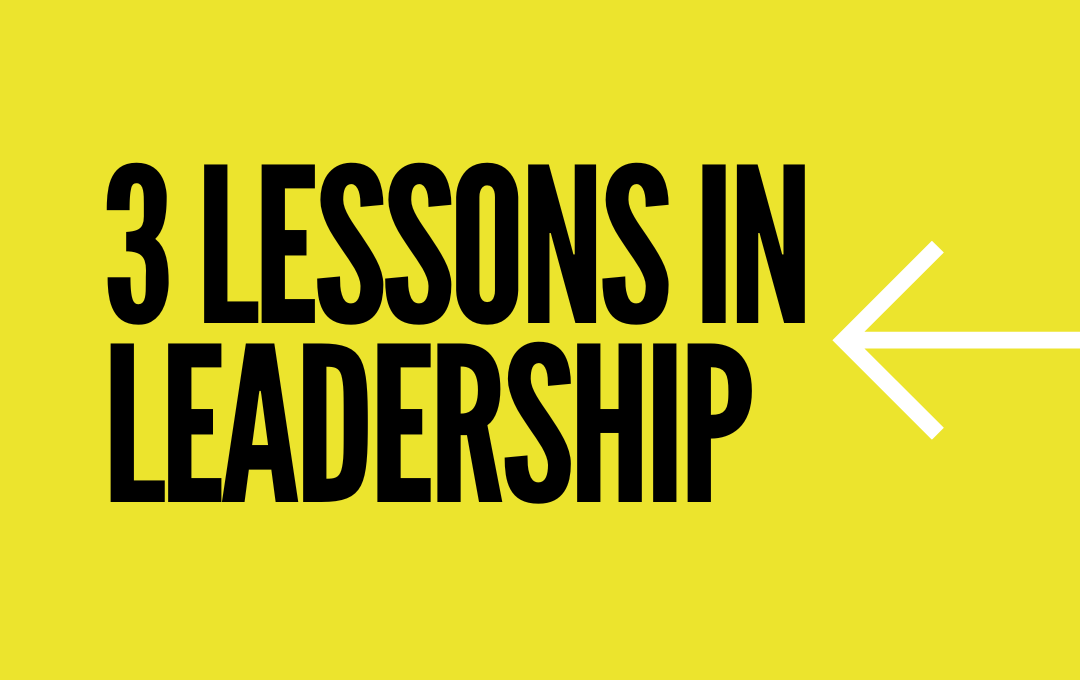Leaders come in all stripes, some are great. Some leave us traumatized. All of them give us an opportunity for learning, reflection, and growth.
Over the course of my working life, I’ve followed the leader, I’ve developed leaders, and I’ve been the leader. I’ve consulted for billionaire leaders, I’ve brought in millions as the leader of my own company, and I’ve supported small-scale entrepreneurs leading toward their very first sale. I’ve led my family, I’ve led my teams and I’ve led my community. It’s safe to say that I’ve learned a lot about leadership – most of it the hard way.
By Rachel Dorsey
Table of Contents
Over the course of our working life, we’ll encounter all types of leaders – we’ll work under good leaders, bad leaders, and ineffective leaders. We may work under toxic leaders – hopefully, we’ll also work under inspirational leaders. We’ll probably work under leaders who motivate by fear, leaders who inspire from the front, leaders who micromanage over your shoulder, and leaders who release control entirely.
We talk a lot about leadership, but leadership isn’t one size fits all, and leadership isn’t something you can learn from a textbook – it has to be experienced, it has to be felt, we have to make mistakes and learn from them so we can grow into effective leaders.
I’ve been every type of leader. I’ve followed the wrong example, and tried on leadership styles that fit me poorly – I’m STILL learning to be a good leader – a good leader is always learning. If you’ve found yourself in a position of leadership, if you were born to lead but haven’t settled into the responsibility, and if you know that even the best leaders are always learning and growing, these lessons are for you.
LESSON 1: Put people first
People do the work. People make the decisions. People buy your products or services and – good or bad – people tell their friends about their experience.
If you’re in business, you’re in the business of people – so put people first.
Treat people as individuals – that’s what they are. Understand their unique strengths and put them in positions accordingly.
Your team members want to do good work. They want to succeed. They want to excel. Take the time to understand what roles they are best suited for, then go a step further. Where do they see themselves next year? In five years? What do they want to do next? What do you see for them? Give your people opportunities to stretch, and be there for them as they grow. Celebrate their milestones. Appreciate failure for the lessons that come from having tried.

When you lead people towards growth, you benefit from their expanded skill set, and they feel invested. Don’t be scared of losing them. You’ll lose them if you hold them back. If we don’t have positions for our team to grow into, then we should want them to outgrow us.
Go a step further and understand what motivates your employees, teammates, and partners – then craft your leadership approach to offer what they need. You cannot motivate two different people in the very same way. Do they want to praise? Time and connection? Opportunities to shine? Clear boundaries between work and home life? What do they need to feel valued? What can you give them to keep them motivated?
Also – (read this one twice) pay people fairly and equitably across the board. If you aren’t in charge of the finances, make sure that you advocate for your people. If you learn of pay inequity, speak up.
LESSON 2: Bring your team on the journey
I had an employee once who clapped out a beat – she asked me what song she was clapping – of course, I had no idea – “That’s right” she said, “because you don’t live in my head, and I don’t live in yours.”
As a leader, it’s our job to set goals – to have a vision and lead our team towards it. But what happens when the leader isn’t articulating where the team is going? Well, then our brains go into default self-preservation mode and we start to worry that our leader is leading us right off a cliff.
A good leader communicates early and often, articulating goals, pointing out milestones, calling out good moves, and course correcting.
If we’re clapping the beat, but we haven’t shared the melody, our team is lost. Once our team is lost, it’s really hard to get them back.
Set up a time to connect with the people you lead. Check on them – be a human. Ask about their families, ask about their vacations, and ask about their lives. Get to know them for real. Refer back to LESSON 1. Our people are our most precious asset. Make yourself available. Be transparent about your plans and intentions. When you make a mistake, own it.
Share successes. Share failures. Share learning lessons and invite your team to do the same without fear of repercussion. Can you cultivate a culture of curiosity? Can you foster a culture of transparency?
LESSON 3: Be Self-Aware.
As a leader, you will make mistakes. They may be highly visible. They may have a serious impact. Can you acknowledge your mistakes without blaming your team? Can you learn from your mistakes and share those learnings as a case study so your team might avoid the quicksand you stepped in?
We don’t leave our baggage at the door, and to think that we do is setting us up for problems. What baggage are you carrying into your workday? The way we show up is affected by the way we feel. Take the time to consider your baggage before you give feedback before you join a call before you pitch a concept. Can you set the baggage down? Can you set down the stressors for an hour from now so you can be effective in this moment? It’s hard to do, but it’s critically important.
Understand how other people see you – understand your mannerisms, take note of your tone and your expression, and pay attention to your body language. People pick up subtle cues. Be aware of yours.
Ask for feedback. Just because you’re in charge doesn’t mean you are perfect. I ask my employees and clients regularly “Is there anything you need from me that you aren’t getting” and “Is there anything about the way I’m communicating that isn’t working for you?” This opens the door for feedback, acknowledgment or repair, and course correction.
Build-in time to reflect and set intentions – it can be weekly, monthly, or quarterly – what matters most is that you follow through.
Leadership is a hard skill and a soft skill – some people are born leaders, and others are made.
No one is a perfect leader. Can we let go of the bravado and show up as a human with those we lead? Can we put our people first? Can we bring our team on the journey? Can we cultivate self-awareness?
Can we learn from the experiences we had and be better leaders than the ones who left us with trauma and as good as the ones we still admire?
CONSIDER:
- Who is the best leader that you know personally?
- What are the qualities that make them good?
- What qualities do you share?
- What small adjustments could they make to be even better?
- What small adjustments can you make to try on those qualities?
Leadership is dance. Be willing to try on different styles. Be willing to make mistakes. Be willing to ask for help when you need it.

Rachel is the founder of Bone + Gold, a full-service, high-polish commercial production company. Her team produces content for some of the largest and most influential brands in the world. She takes everything she learned to build her business and puts it to play as a coach and mentor for women who are starting and scaling businesses.











